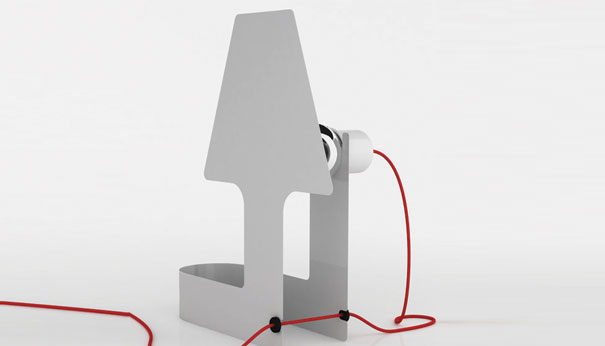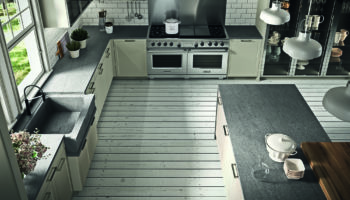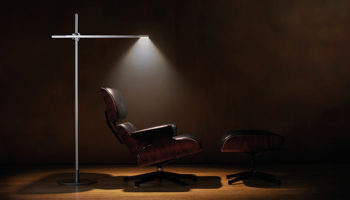BIY Lamp by Almerich and Luis Eslava Studio
Anyone familiar with the concept of “Consilience?” Employed about ten years back by biologist E.O. Wilson in his book of the same name, the term refers to the fortuitous, almost mystical concurrence of knowledge from different disciplines to solve the same problem. A scientist of the first rank, Wilson used the term to forecast the unity of thought among humanists and scientists needed to address pressing global concerns (like climate change). Never an aspirant to such an idealistic cause, I evoke it here because it perfectly quantifies the wonderful similarities between two of this week’s lighting products: Alicita’s Coil Lamp and my BIY.
BIY Lamp. Designed by Luis Eslava Studio for Almerich.
Perhaps another, simpler way to say this is that this must be the week of DIY concepts in lighting. But I never opt for the simple way of characterizing A & D, especially as regards two products that both engage the idea of an iconic “lampness,” while whittling the actual lamp down to its material essence, and involving consumers in the construction of the piece to boot. I’ll refer you to Alicita’s post to learn about Coil, while disclosing that Almerich’s BIY (by Luis Eslava Studio) is made up of a simple cord, bulb, and flat-packed silhouette—In die-cut stainless steel—of the very image of a lamp.


The whole ensemble arrives (should you wish it and make it so) in a flat envelope, leaving you to bend the steel up into its dynamic two-dimensional form, thread the cord, screw in the bulb, and voila!… You have the archetypal lamp. The piece resembles both Coil and last week’s Spun Lamp in the sense of incorporating the cord as a design feature rather than pretending it’s not really there. BIY also evokes new ideas in assembly and the aesthetic possibilities therein (see Breakplane and the Origami Chair).
All the above is terrific, of course, but the quality I most admire in BIY is the way it plays around with notions of three-dimensionality and our pre-conceived ideas about what is “real” or “finished.” The steel silhouette—in its very overt declaration that it’s just a façade for the real workings of the lamp—reminds me of the prototypical fake fronts in so many of Sergio Leone’s Spaghetti Westerns. The films had a wink-nudge sensibility that pretended to take the goings-on completely seriously while finding all sorts of ways to poke fun at the artifice of it all. Just so with BIY: it challenges our expectations about what a lamp should be while simultaneously carving out a whole new intriguing aesthetic.




Leave a Reply